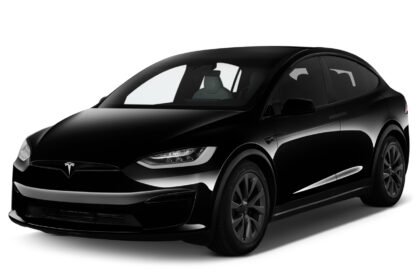Hyundai has unveiled its latest innovation, the Concept Three, at the 2025 IAA Mobility show in Munich. This compact electric hatchback marks a significant milestone for the automaker, as it introduces the first small Ioniq EV, likely to be named the Ioniq 3. This new model is set to redefine the subcompact electric vehicle segment, showcasing Hyundai’s commitment to sustainable mobility and cutting-edge design.
Striking Exterior Design
The Concept Three embodies Hyundai’s “Art of Steel” design philosophy, featuring a sleek aerodynamic profile characterized by a sharply sloping roofline and an integrated rear ducktail spoiler. The wraparound C-pillar and shoulder seamlessly flow into the bonnet, extending over the wheel arches, creating a cohesive and dynamic silhouette.
One of the standout features of the Concept Three is its matte steel finish, complemented by neon yellow accents on the glass and wheels. This vibrant contrast not only enhances the vehicle’s aesthetic appeal but also emphasizes its futuristic design. The front and rear of the car are adorned with parametric Pixel LED lights that create dynamic 3D gradient patterns, giving the hatchback a distinctive graphic signature that sets it apart from competitors.
Design Inspiration and Process
Hyundai’s design team, led by chief designer Nicola Danza, took an unconventional approach to the Concept Three’s development. Instead of relying solely on digital tools, the team returned to traditional methods, using paper to explore design concepts. This hands-on approach allowed designers to cut, fold, and bend paper to visualize the compact hatchback’s form, resulting in a design that emphasizes wraparound shoulders, pillars, and a guided rear spoiler.
Innovative Interior and Technology
The interior of the Concept Three is a testament to Hyundai’s forward-thinking approach to automotive design. High-quality speakers, shaped like twin exhaust pipes, add a unique touch to the cabin. Additionally, the doors feature retro-style display screens or camera pods, enhancing the vehicle’s modern aesthetic.
One of the most intriguing elements of the interior is the introduction of a shape-shifting co-pilot named “MR Pix.” This innovative feature interacts with the driver, popping up on the screen to create a playful connection between the driver and the vehicle. The seats and interior panels are crafted from recycled ocean-waste textiles and lightweight aluminum foam, reflecting Hyundai’s commitment to sustainability.
The “Bring Your Own Lifestyle” (BYOL) dashboard is another notable feature, allowing electronic components to slide out on demand, providing a customizable experience for drivers. When the vehicle is engaged, the steering wheel and personalized gadget modules adjust, retracting on straight roads to create a more spacious and comfortable environment.
Production Timeline for the Ioniq 3
Hyundai has confirmed that the Concept Three is not just a prototype but a precursor to a production model. The Ioniq 3 is expected to launch in early 2026, with a potential release date in February or March. The vehicle will be assembled at Hyundai’s new plant in Turkey, further expanding the company’s manufacturing capabilities.
The 2026 Ioniq 3 will utilize the same E-GMP platform as other Hyundai and Kia electric vehicles, ensuring a robust and efficient performance. It is anticipated to offer a battery pack ranging from 60 to 80 kWh, providing a WLTP range of approximately 260 to 365 miles. This competitive range positions the Ioniq 3 favorably within its class, appealing to environmentally conscious consumers seeking a reliable electric vehicle.
Conclusion
The Hyundai Concept Three represents a bold step forward in the realm of compact electric vehicles. With its striking design, innovative technology, and commitment to sustainability, the Ioniq 3 is poised to make a significant impact in the automotive market. As Hyundai continues to push the boundaries of electric mobility, the upcoming Ioniq 3 is set to be a game-changer for both the brand and the industry as a whole.










